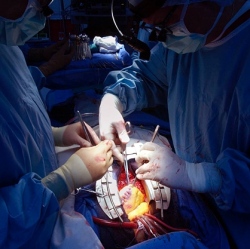
An extraordinary competition is underway, one that could be more impactful to the human species than any other technological rivalry to come before it. Soon, the radical concept of substantially improving or outright replacing our organs is going to be commonplace.
Globally, organ failure is a leading cause of death. But transplantable organs are in far too short of a supply around the world to help many in need, even former Vice President Dick Cheney had to wait 20 months to get his new heart. Various methodologies, technologies, and even spiritual and philosophical preferences are dividing up this human upgrade quest.
Companies are launching into the field, hoping to create the dominant longevity tech that people in the near future will use to live to 150 and beyond. Many futurists believe each of our major body parts will likely one day be replaced or significantly modified by extreme science and technology.
Recently, I wrote about the growing use of artificial hearts and optimistically predicted in 10 years robotic hearts may be equal or better than human hearts. On September 5th, a revolutionary new robotic heart, the Carmat heart, was fitted into a patient in France. According to the AFP, French Health Minister Mariso Touraine said, “This intervention confirms that heart transplant procedures are entering a new era.”
While researching artificial hearts, however, I was surprised to learn that healing damaged organs with stem cells or growing new organs outright may end up beating the creation of artificial organs to the marketplace. Right away, I realized one of the great races of the 21st century might already be underway.
The technological rivalries of the 20th century have long fascinated people. The evolution of the transportation industry: cars vs. trains vs. airplanes. Or what about Bill Gates’ infamous tactics against Apple and IBM to establish Microsoft Windows as the dominant operating system in the world?
The healthcare industry has rarely had such a publicized competition, as most innovation was isolated to its own specific causes and needs. But the modern world of invention is now more connected than ever.
